2020 Update
This bike is still in regular use, and folk still read this post, so perhaps a quick update is on order, almost 8 years on from the original post. It’s been probably the most reliable winter trainer I ever owned; the old Soma Rush that preceded this was an excellent ride too.. until the frame cracked. I still think the Kona’s compact frame looks a bit rubbish but functionally it’s proven to be a great bike. Thousands of km in winter conditions mean it has a decent ‘patina’ now, and while the build is largely the same, like any respectable winter trainer nothing really matches any more, not even the tyres. For ex. the front wheel is a Rigida Chrina rim on a Surly low flange track hub, while the rear is still the original Goldtec + Open Pro; the front Goldtec hub eventually went in the bin when, on removing failed bearings, I found that the bearing seats had become too badly corroded to seat a new bearing properly. The rear is still ok though, I’d fitted some Enduro bearings after the originals failed in 2007, they’re a bit rumbly now but still OK. I will probably drop some new ones in before next winter rolls around however.
The Honjo fenders eventually fatigued and snapped around the frame mounting points (rough roads), and have been replaced by a pair of trusty, unexciting SKS chromoplastics. The Miche BB still spins like a new one, this one was already secondhand when I put it on this, so has around 40,000-ish km on it I reckon. It’s one reason I have so little time for modern external units that struggle to last 3000km. I can’t imagine I’ll ever get it out of the frame now however, bit like the seatpost – that’s seized; no idea when that happened but my legs are no shorter so it’s not an issue. I run a 49×18 drivetrain for winter; Miche cogs are cheap at around £12, and as winter has a habit of grinding drivetrains to sludge, a few years ago I picked up a box of 20 SRAM track chains at £1 each. Traditional winter bikes seem to be increasingly rare as a marketing driven world persuades people they need high end carbon bikes for winter riding, so as not to wear out the high end carbon summer bike.. I think bikes like this are ace, and this one has many more winters ahead of it.
Original Post
The PaddyWagon frame I found online recently has built up into a really nice winter trainer.. I built it on Tuesday afternoon and took it for a quick 60km shakedown spin yesterday afternoon. It’s a nice ride.. not as sparkly as my DeSalvo but you wouldn’t expect that, but it does have that nice ride that is particular to more than half-decent steel frames, handles well and is stiff enough to go up hills quickly without feeling as if the frame is soaking up the energy from my legs. Should keep me happy for a few winters.
Most of the parts came out of my bits box with the exception of the headset (new), the mudguards/fenders (£20 from a mate), a deep drop front calliper (DiaCompe, fleabay) and a new chain. I use Miche 1/8″ track chains a lot, they’re good value – you can usually find them for around £7, they run quietly (unlike some 1/8″ chains) and last well enough to survive a solid winter of riding. The build is a somewhat eclectic mix, and quite nice for a winter machine.. Goldtec track hubs on Open Pro Rims, those Honjo fenders, a Thomson Elite seatpost, Deda Newton bars (on a no-name polished stem), Miche track chainset (172.5mm) and the San Marco Regal saddle that used to be on my Nomad.. the leather is totally worn out on it but that saddle and my butt have seen some pretty epic journeys together so I’ll keep using it ’till it dies completely. Gearing is pretty standard 48×18 that I’ve been running in the winter for years.. gives me a comfortable cruising speed range up of a relaxed 20km/hr up to 40-41km/hr.. or 48-50km/hr if I cane it, and I can get up everything that Cornwall has to offer by way of hills. Sorted.
I still maintain that compact frame styles look a bit silly but for the paltry sum it cost me I can live with it… and it is a nice colour..
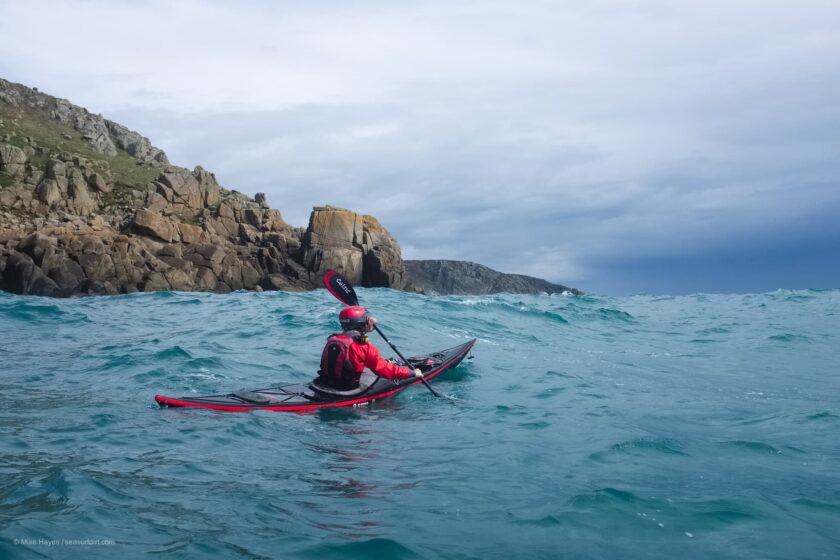
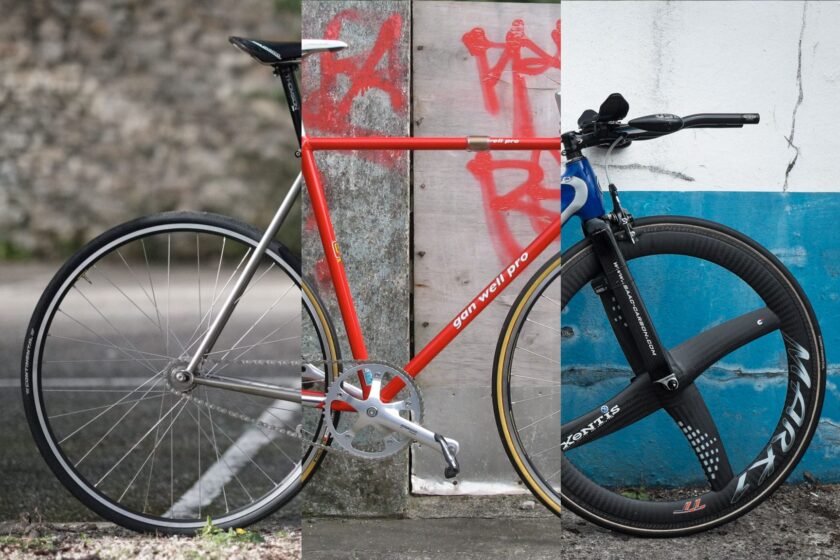
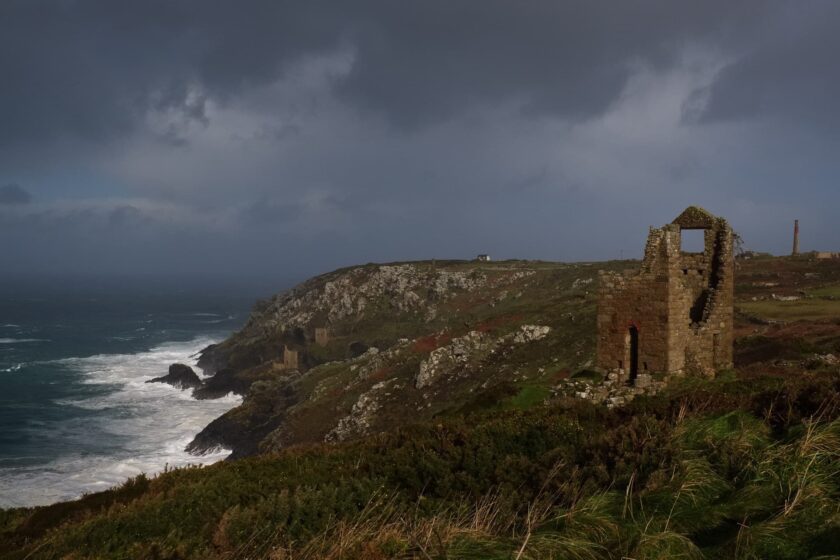
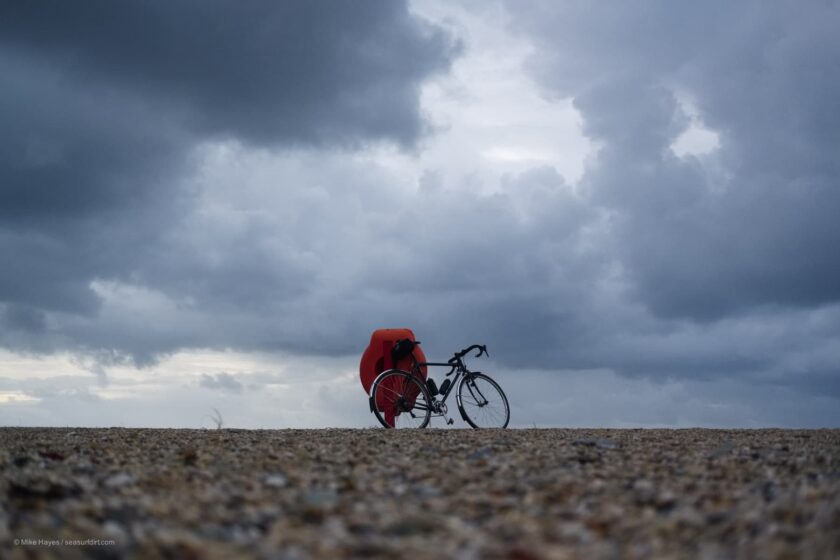
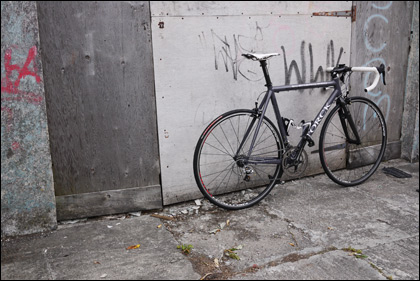
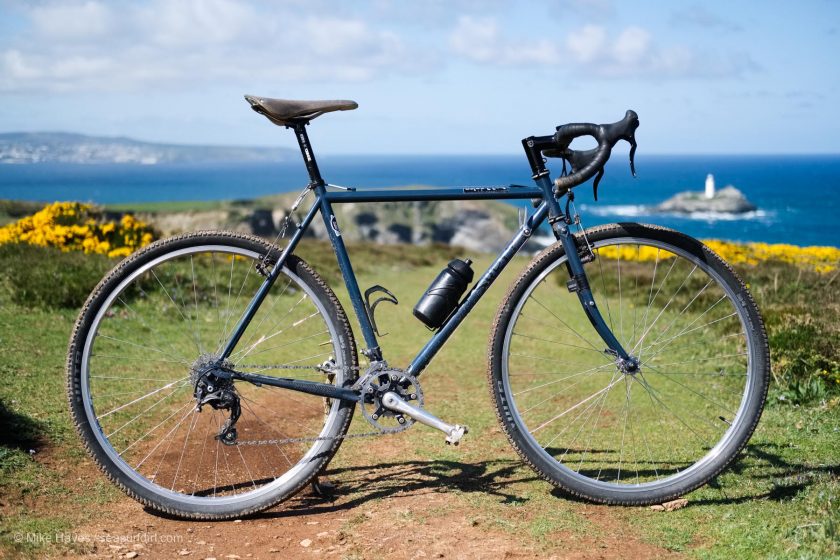
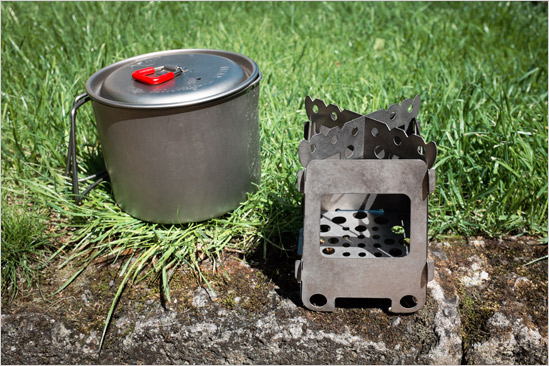
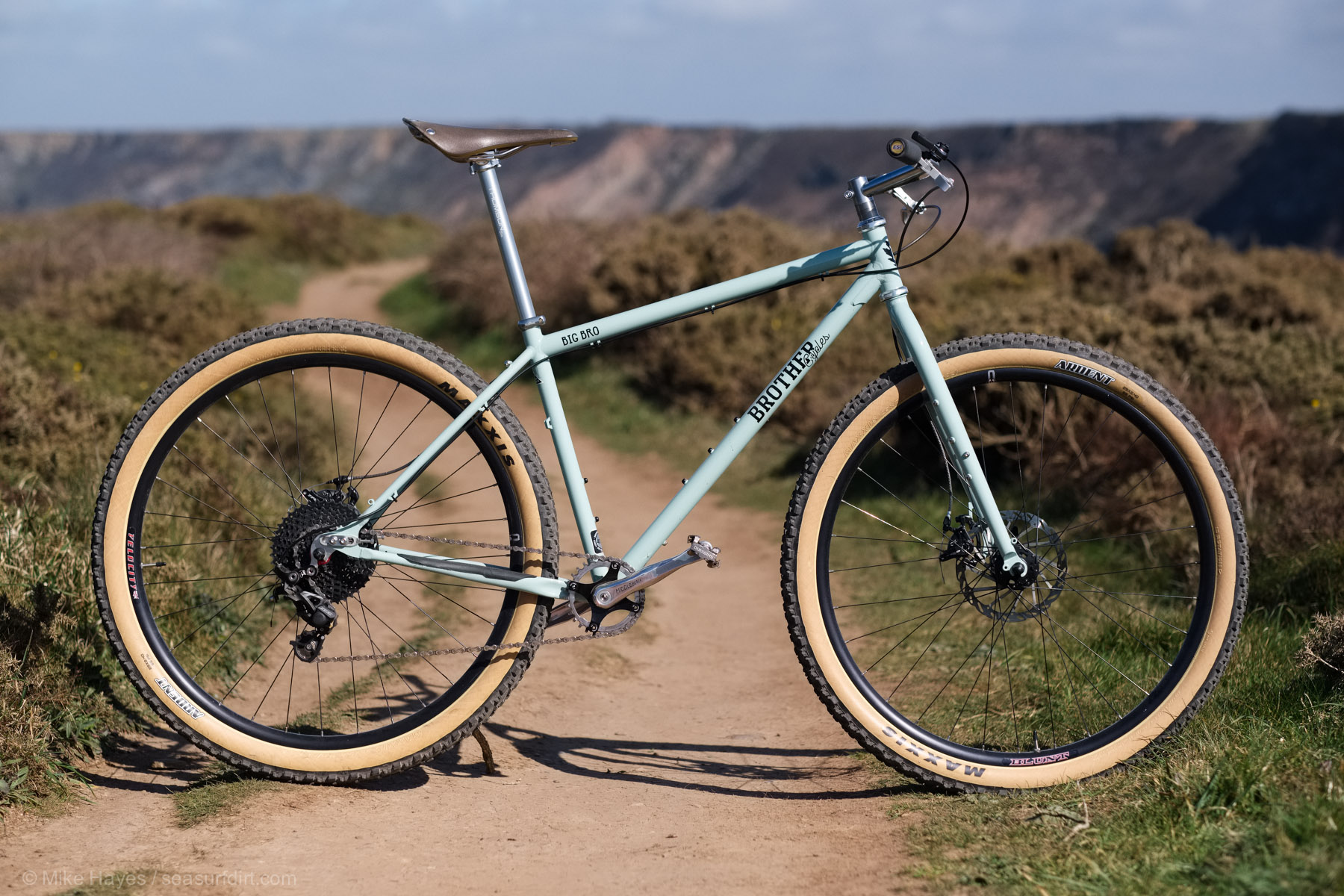
Hi Mike, nice job.
i’m doing something similar with a condor steel frame, and was wondering if there are mudguard mounts on that frame, and if not, how did you fix the mudguards?
hey, it’s really hard to find steel fixed gear frames with mudguard mounts.. the Paddy Wagon is a rare thing in reespect of that in that it does have proper mounts both front and rear. There is no threaded boss on the chainstay bridge but I just used a zip-tie down there with a rubber ‘buffer’ (old inner tube rubber) between the guard and the bridge. The current 2012 frame has them also.
In the past where a track frame hasn’t got bosses on the back I’ve just drilled and tapped the dropout for an M5 bolt. Forks are a bit more awkward, can’t drill those…!
cheers!
Mike
Thanks for the reply. I was also wondering why a steel fork was a deal breaker for this build? i thought current wisdom was that steel frames ‘need’ a carbon fork to make them a bit better handling?
nah, steel forks are lovely, sure they’re heavier and not as stiff as a carbon fork but if the bike isn’t being raced that doesn’t matter and you do get a nice supple ride for less wedge. They also look better on a skinny tubed steel frame IMO, fat carbon forks with skinny pipes don’t look right to my eye…
Alloy forks on the other hand.. don’t go there.
One more thing (!) – as someone who’s currently also wrestling with winter bike decisions and questions, I’m somewhat bemused by the choice of steel to save your titanium fixed frame, which would be way more resistant to winter corrosion and grit, wouldn’t it? all you’d have to do is switch your fancy phil wheels and put the mudguards on it..
I’m not trying to nit-pick your choice, I’m just trying to get to grips with the winter-bike concept as a whole and decide what’s right for me…
haha, good question and one I ponder occasionally myself.. bottom line is I’m a tart :-) Originally I did plan to use the DeSalvo for winer (I did for one season) hence the hidden fender eyes… but then I put all the nice parts on it… and also found that there are no good looking winter carbon forks around (IMO.. again..) so decided in the end that I enjoyed riding it as ‘nice bike’ too much to want to have it in winter mode, hence the separate winter hack.. which given I had most parts worked out as cheap as buying a second fork for the DeSalvo.. a winter one with mudguard eyes.. The steel Kona will corrode eventually but CroMo is surprisingly resistant to rust, as compared to say mild steel.. so it will last many years anyway provided one pays a little attention to washing salt off etc.. and given it was so cheap I’m happy with that. The very thin-walled steel frames, especially older ones made from 753, 653 etc will rust through quicker simply because the tube wall thickness is so small.. but a 4130 CroMo frame has relatively thick tube sidewalls (Reynolds 520 would be the same for example) so wll last…
You could always go the cheap alloy frame + carbon fork route.. plenty of those around with mudguard eyes but really steel will last as well with a little care.
Good answer, that all makes sense to me! i’ve been looking to pick up a cheap or cheap-ish Ti frame for winter as an alternative to summer carbon.
I have to say titanium is ace.. winter or summer… I’d have one for each season if I could afford it :-)
Hey, great looking bike! Sorry to dig up an old thread, but i am considering a setup very much like this, and i have a concern: in the event of a rear flat, how much of a problem will the full metal fenders+rear facing drop outs be? I would guess that fully removing the fender to fix a flat is something you’d only do once, and simply unbolting the stays and bending the fender up is a no-go with metal fenders… What has your experience been?
hey, cheers for your message. re the fenders and a flat tyre.. it’s actually not been a problem at all, the bolt I’m using to secure the fender to the dropout uses the same size hex-key as my front axle, so a couple of turns of the bolt releases the stays and the wheels slides out with no drama at all.. with the honjo fenders I find it easier to get out than on my last winter bike that had sks fenders… the honjos only have a single stay each side and perhaps it’s that which makes it easy – there’s plenty of flexibility to allow the wheel to slide backwards and then simply drop out. No drama at all.
cheers!
Mike
Hi there,
I’m currently loving my 2012 Kona Paddy Wagon as a commuter bike and I’m thinking of getting some full fenders for it. I’m worried full fenders like the SKS chromoplastic won’t fit while running 28c continental gatorskins. Can you share any knowledge to alleviate this concern? What size are the tyres you’re running on this bike.
Thanks
hey, I’m running 23C tyres at the moment because I had some gatorskins in the garage in that size. You might squeeze in a 28, I don’t know. Try it.. at worst you might have to use 25s perhaps
28mm tires with SKS Bluemels works fine, I have about 3 mm space left. But, for a real winter bike, I believe 28 mm tires is still a bit too slim.
Hi, ive been reading a few of your articles acter having a look at the Brother All Day frame (your review is linked there)
I love the way you put bikes together and your thinking process behind the decisions you make. Ive never ridden fixed gear and I really think it could be for me. I have a quick question though if youve got a minute to help me out. Ive seen it written in a lot of places that short crank arms are important for ground clearance in corners. You having 172.5mm crank arms on some builds suggest its not such a problem, what are your thoughts on this?
Many thanks
Hi Eddie, thanks for the positive feedback! With regard to fixed gear crank length, I’ve seen a number of commentaries stating that short cranks are preferred for clearance on banked tracks, and that they’re better for high cadence pedalling and so on… I’m not fully convinced, I could well be wrong but I’m of the opinion that much of it is to do with tradition as anything (and that a number of velodromes don’t permit cranks longer than 165/170), in the way that road cranks are offered in 170/172.5/175 and most MTB cranks are always 175 for whatever reason. I feel comfortable on 172.5, 170, and 175mm cranks, I think differences are too small to notice, and the fact I ride a 172.5 crank on road is more to do with having always done that rather than any particular reason, biomechanical or otherwise, and worrying (when I was still racing) about whether my performance would suffer if I rode anything else. I’ve had no issues with pedal strike in turns on a fixed gear. It isn’t possible to bank at speed as much as you might on a road bike, simply because you can’t stop pedalling, and you’d probably feel unstable in a banked turn before you managed to strike a pedal, IMO. The difference made in what you can and can’t achieve cornering through a 5 or 10mm difference in crank length is pretty trivial. Your choice of pedal is likely to be a bigger factor.
Anyway, that’s what I think, it should not be taken as gospel!
This might be of interest: https://www.trainingpeaks.com/blog/the-benefits-of-reducing-your-crank-length/
and, section on crank length https://www.velodrome.shop/faqtech-gear
Thanks for your thoughts on this. This is a great response actually. Its funny that I was worried about having to size down to 165mm and by the time ive read the article you linked and heard your thoughts I know that I dont need to but maybe I want to now! Just like in a lot of other areas of cycling you realise it doesnt matter much what you use once you peel back all the bollocks.
Many thanks and have a great day, cheers
happy to be able to try and add some clarity.. :-) and yep, it doesn’t matter that much.. unless you’re a top class athlete then so long as the bike fits, your position is good, and you’ve got the legs everything else is pretty trivial IMO